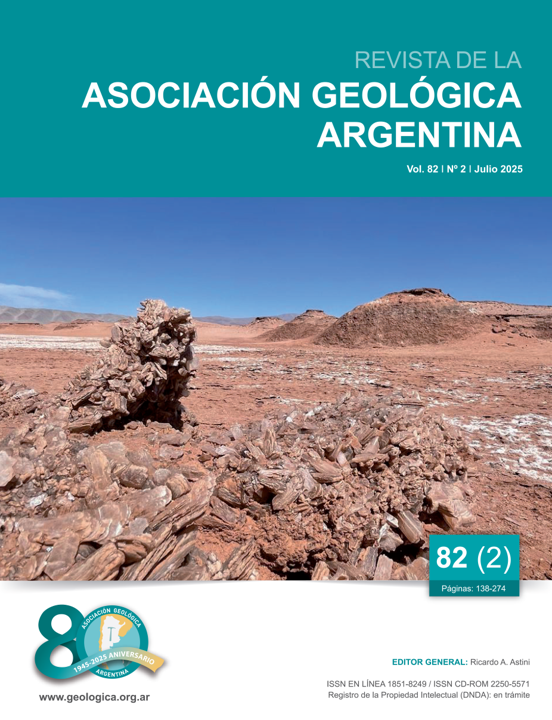Facies and depositional environment analysis of the southern sector of the Salar de Pocitos, Salta, Argentina
Contenido principal del artículo
Resumen
Located in the Southern Puna, the Salar de Pocitos is a north–south trending endorheic basin covering an area of 405 km². The southern sector of the basin is bounded by the Coquena and Tolillar Formations, the Ojo de Colorados Basic Complex, and the Pastos
Grandes Group. This portion of the basin hosts clastic and evaporitic deposits that act as reservoirs for lithium-enriched brines. This study aims to provide a sedimentological characterization of the basin fill in order to interpret the stratigraphic framework, depositional environments, and sedimentary evolution of the southern sector of the salar. Sedimentological analysis was based on core samples
from four drillholes. Thirteen sedimentary facies were identified, additionally enabling a provenance study of the sandstones. Selley-style stratigraphic columns were constructed to facilitate facies correlation and the interpretation of depositional environments. In
the southwestern area, fine-grained sandstones interbedded with claystones, carbonates, and halite dominate, whereas in the southeast, breccias, sandstones, siltstones, and crystalline halites are more prevalent. Toward the depocenter of the southern sector, finegrained sandstones, breccias, siltstones, carbonates, and gypsum crystals associated with halite are common, while in the northern part of the study area, the deposits include thick beds of fine- to coarse-grained sandstones and halite, interbedded with claystones and siltstones. Sulfate minerals frequently cap the succession. The results suggest deposition within a playa-lake system, including alluvial fans, ephemeral fluvial systems, and shallow saline lakes—characteristic of endorheic basins in arid settings.
Detalles del artículo

Esta obra está bajo una licencia internacional Creative Commons Atribución-NoComercial 4.0.
Nota de copyright
Los autores conservan los derechos de autor y garantizan a la revista el derecho de ser la primera publicación del trabajo licenciado según una licencia de atribución Creative Commons que permite a otros compartir el trabajo con el reconocimiento de la autoría y de la publicación en la que se publicó por primera vez.
Declaración de privacidad
Los nombres y direcciones de correo electrónico introducidos en esta revista se usarán exclusivamente para los fines declarados por esta revista y no estarán disponibles para ningún otro propósito u otra persona.

